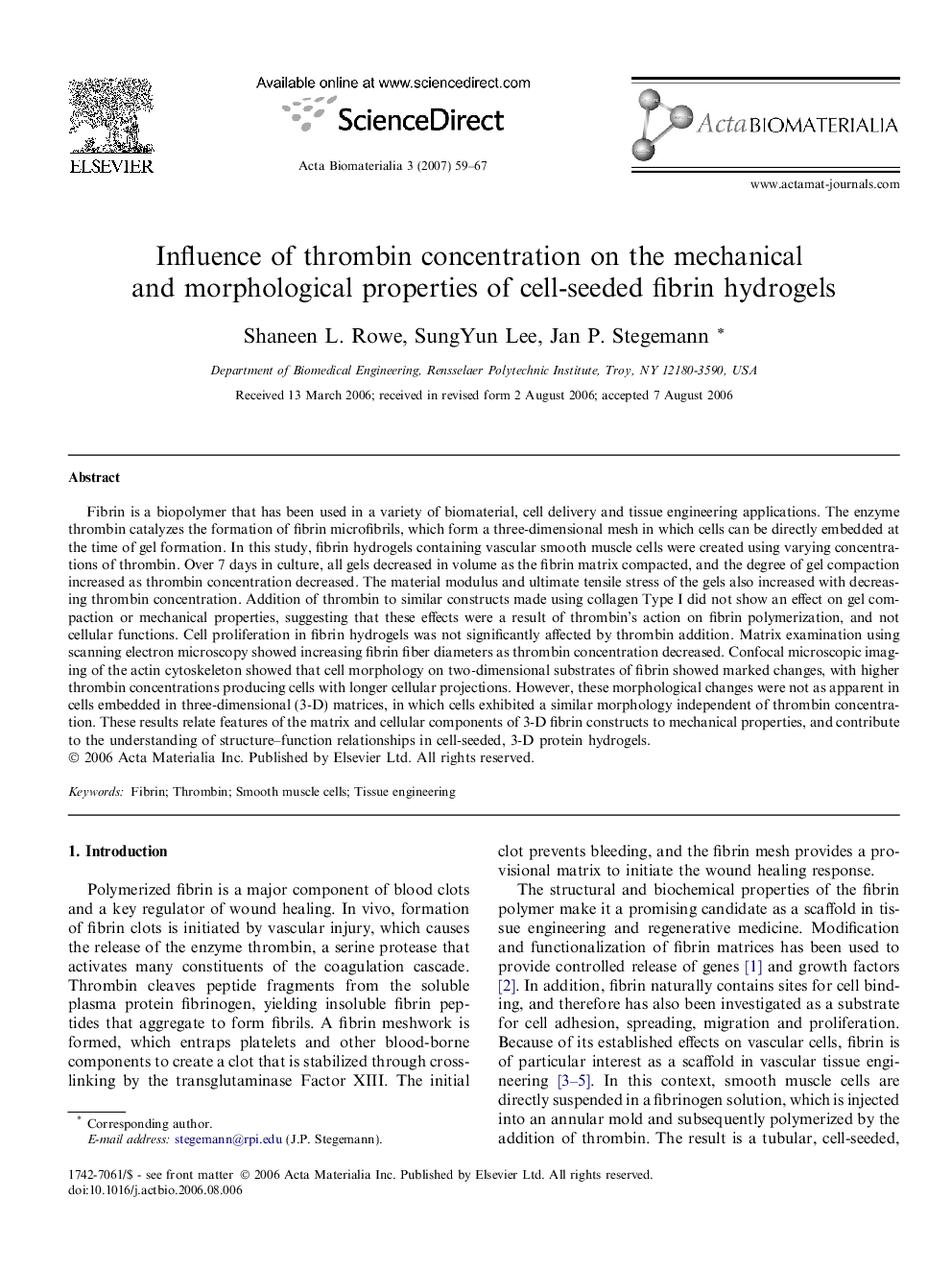| Article ID | Journal | Published Year | Pages | File Type |
|---|---|---|---|---|
| 2567 | Acta Biomaterialia | 2007 | 9 Pages |
Fibrin is a biopolymer that has been used in a variety of biomaterial, cell delivery and tissue engineering applications. The enzyme thrombin catalyzes the formation of fibrin microfibrils, which form a three-dimensional mesh in which cells can be directly embedded at the time of gel formation. In this study, fibrin hydrogels containing vascular smooth muscle cells were created using varying concentrations of thrombin. Over 7 days in culture, all gels decreased in volume as the fibrin matrix compacted, and the degree of gel compaction increased as thrombin concentration decreased. The material modulus and ultimate tensile stress of the gels also increased with decreasing thrombin concentration. Addition of thrombin to similar constructs made using collagen Type I did not show an effect on gel compaction or mechanical properties, suggesting that these effects were a result of thrombin’s action on fibrin polymerization, and not cellular functions. Cell proliferation in fibrin hydrogels was not significantly affected by thrombin addition. Matrix examination using scanning electron microscopy showed increasing fibrin fiber diameters as thrombin concentration decreased. Confocal microscopic imaging of the actin cytoskeleton showed that cell morphology on two-dimensional substrates of fibrin showed marked changes, with higher thrombin concentrations producing cells with longer cellular projections. However, these morphological changes were not as apparent in cells embedded in three-dimensional (3-D) matrices, in which cells exhibited a similar morphology independent of thrombin concentration. These results relate features of the matrix and cellular components of 3-D fibrin constructs to mechanical properties, and contribute to the understanding of structure–function relationships in cell-seeded, 3-D protein hydrogels.
